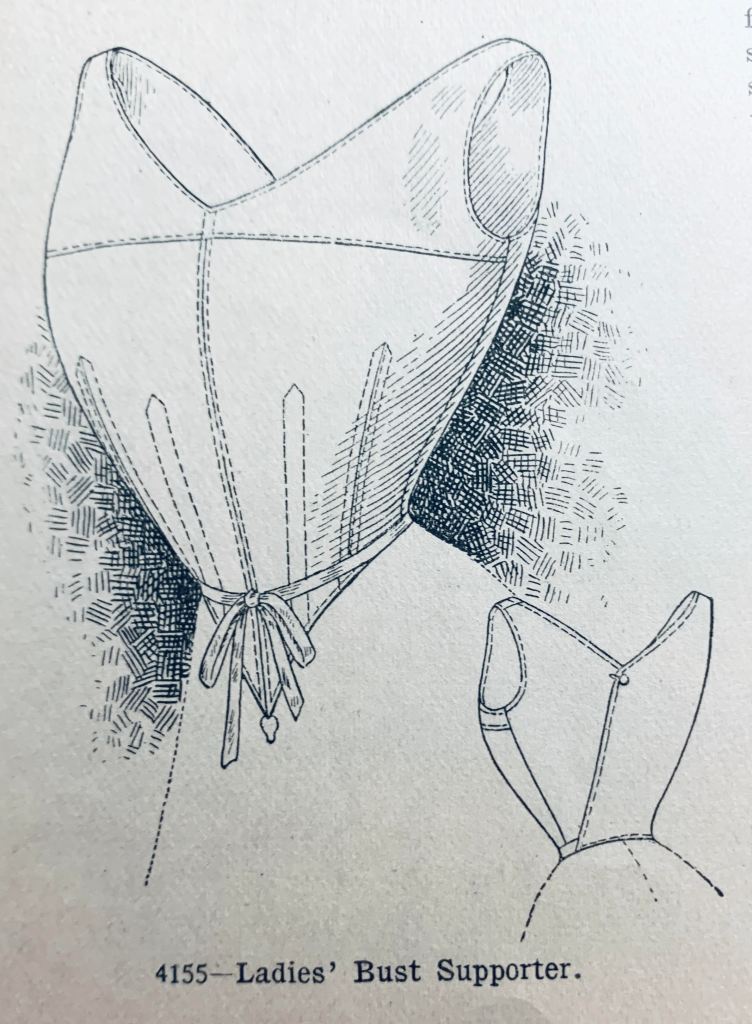
I came across this pattern in a 1906 issue of New Idea Woman’s Magazine. “For stout figures the bust supporter is almost indispensable, as it gives a trim, firm effect to the figure. It is worn over a corset, and may take the place of a corset cover, though many women prefer to wear a chemise or corset cover with it.”
The front is two sections, a top yoke and a lower boned portion. There are five bones which are eight inches long each. The back buttons at the top of the back, and the tape wraps around from the back to tie in front. I’m not sure the purpose of that tape? It is shown plain but some would also embroider it to make it more dainty, as per the dainty fashions of the era. These were made from coutil (corset fabric) but could also be made from heavy linen or heavy muslin.
Edwardian women wore so many layers, I really don’t know how they could survive in the heat. I am NOT a summer person at all, and never have been, and I think I would’ve been in a swoon all the time. I would like this as a stand alone undergarment if I were not a stout woman though. I think it looks super comfortable if it were made without the boning. God knows it looks more comfy than a bra, yes?




